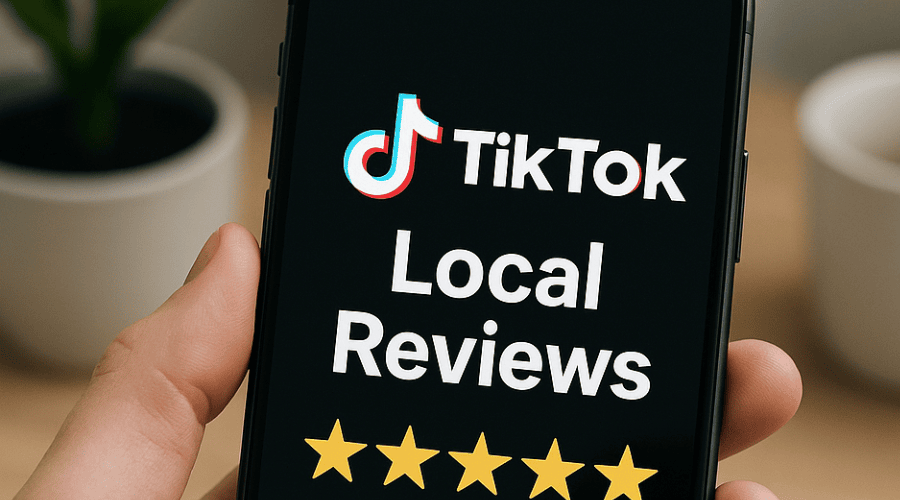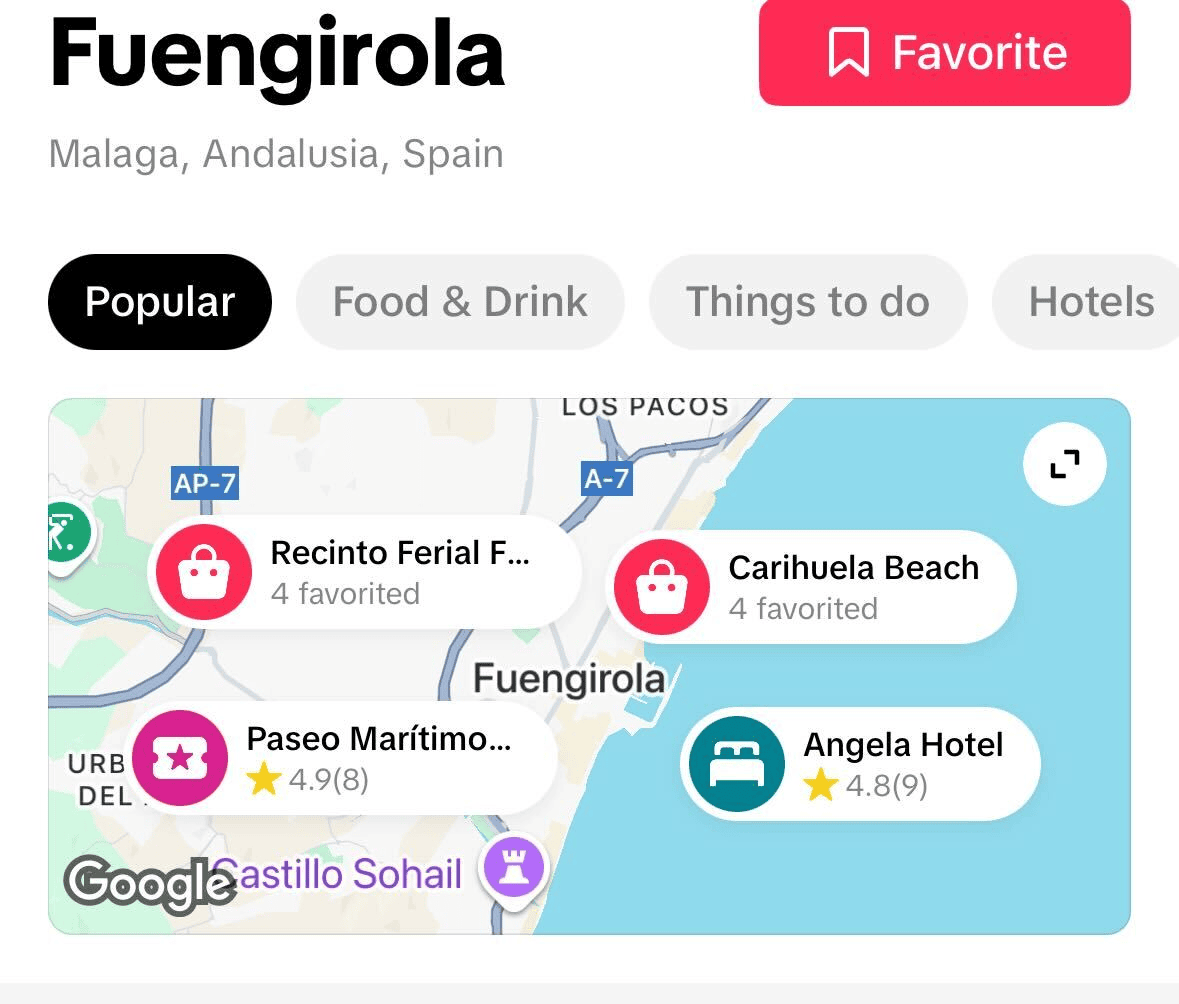TikTok’s New Local Reviews Feature

TikTok has just upped the ante in its battle with Google by integrating reviews directly into its platform, a move that could dramatically reshape how affiliate marketers connect with local businesses. This isn’t just another social media update—it’s a fundamental shift in how consumers discover and evaluate local businesses.
The Reviews Revolution: What’s Actually Happening?
TikTok is now surfacing reviews for specific places right within the comments tab of location-tagged videos. This new feature eliminates the need for users to conduct a new search or open Google when they come across an interesting place on TikTok. (TechCrunch)

The mechanics are straightforward but powerful: When users access a video’s comments where a location has been tagged (like Central Park in NYC), they’ll see a new “Reviews” tab displaying star ratings, written reviews, and user-uploaded photos. Users can even click through to reviewers’ profiles, creating a seamless social experience around local discovery.
This isn’t TikTok’s first foray into location-based features. The platform has been testing a “Nearby” feature that functions similar to Google’s “near me” search, displaying geo-based content to users and encouraging Gen Z to rely on TikTok as their primary search engine. (Widewail)
Why Affiliates Should Pay Attention
For affiliate marketers, this represents a massive opportunity that combines the best aspects of social commerce, local marketing, and user-generated content. Here’s why:
- The TikTok Affiliate Ecosystem Is Already Robust
TikTok has been steadily building out its affiliate infrastructure. The TikTok For Business Partner Program allows partners to earn commission when driving new users to use TikTok For Business, with competitive kickbacks on referrals’ ad spend and bonus thresholds.
For creators, TikTok Shop offers an affiliate program that typically pays commission rates between 5% and 30% depending on the product and merchant. To become a TikTok Shop affiliate, you need at least 5,000 followers.
- Local Discovery Is Going Visual
The shift to visual search favors authentic content over polished marketing. Unlike Yelp and Google, which rely on text reviews and static photos, TikTok offers a dynamic, immersive experience where users get real-time, unfiltered glimpses of businesses through live video tours and authentic user reviews.
This creates a natural fit for affiliate marketers who excel at creating engaging content that feels genuine rather than promotional.
This isn’t speculative—it’s happening now. Recent trends show that over 40% of young people no longer use Google Search/Maps as their primary search engine. A Google executive even acknowledged in 2022 that TikTok was eating into its core services, particularly among younger users.
A Three-Step Formula for Affiliate Success with TikTok Local
If you’re an affiliate marketer looking to capitalize on TikTok’s local search revolution, here’s my battle-tested formula:
Step 1: Location-Focused Content Strategy
Create content specifically tailored to local discovery. Using social media best practices for local SEO helps your business get seen by potential customers in your area, ensuring that TikTok’s algorithm understands exactly what your business offers and where it’s located.
When creating affiliate content for local businesses, ensure you’re properly tagging locations and using locally relevant hashtags. Think of yourself as a local guide rather than just a promoter.
Step 2: User-Generated Content Partnerships
User-generated content (UGC) videos are 22% more effective than branded content on TikTok and are a great way to establish trust and increase brand awareness. As an affiliate, partner with local businesses to encourage their customers to create review content featuring your affiliate links or codes.
Consider creating a template or challenge that makes it easy for users to share their experiences at local businesses through your affiliate channel.
Step 3: Cross-Platform Attribution
Since TikTok doesn’t allow direct affiliate links in videos, create a strategic attribution system. Most TikTok creators direct audiences to their profile for a bridge page or landing page to make sales, which makes affiliate marketing somewhat more challenging than on other platforms.
Use tools like Linktree or custom landing pages that feature multiple local business affiliate partnerships, organized by location or category.
What This Means for Marketers Beyond Affiliates
For the broader marketing community, TikTok’s move into local reviews signals several important shifts:
- The Visual Search Revolution
Text-based search is rapidly being supplemented (if not replaced) by visual discovery, especially among younger consumers. Brands that fail to create visually engaging content tied to specific locations will increasingly find themselves invisible to this demographic.
- Authentic Over Polished
The most successful content on TikTok feels authentic and unfiltered. TikTok provides local businesses the opportunity to show what look and feel their business has to offer to a younger audience, functioning as a recommendation engine similar to Google. This means marketing agencies need to shift from producing highly polished content to creating authentic, in-the-moment experiences.
- The Platform Consolidation
TikTok is no longer just an entertainment app—it’s becoming a one-stop shop for discovery, evaluation, and potentially purchase. This mirrors what we’ve seen with WeChat in China, where platforms consolidate multiple functions into a single ecosystem.
The Bottom Line: Act Now or Be Left Behind
TikTok’s integration of reviews directly into its platform isn’t just another feature update—it’s a clear signal that the platform is serious about becoming the default discovery engine for local businesses. For affiliate marketers who’ve traditionally relied on Google searches or review sites to drive traffic to partner businesses, this represents both a threat and an opportunity.
Those who can quickly adapt their affiliate strategies to leverage TikTok’s unique combination of social proof, visual discovery, and location awareness will find themselves at the forefront of a significant shift in consumer behavior.
The formula is simple but powerful: create genuine, location-focused content that seamlessly integrates with TikTok’s new review features, build partnerships that encourage user-generated content, and develop clear attribution systems that connect discovery to conversion.
The window for early adoption won’t stay open forever. The time to establish your presence in TikTok’s local discovery ecosystem is now—before the competition catches on and the algorithm gets crowded.






